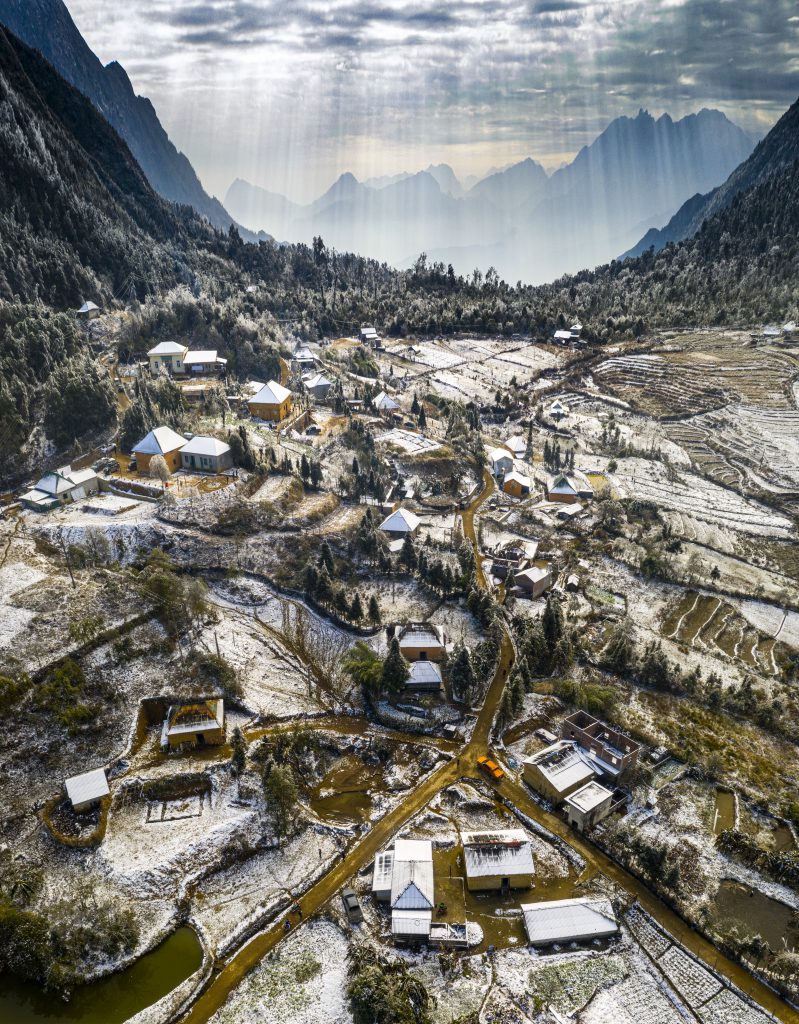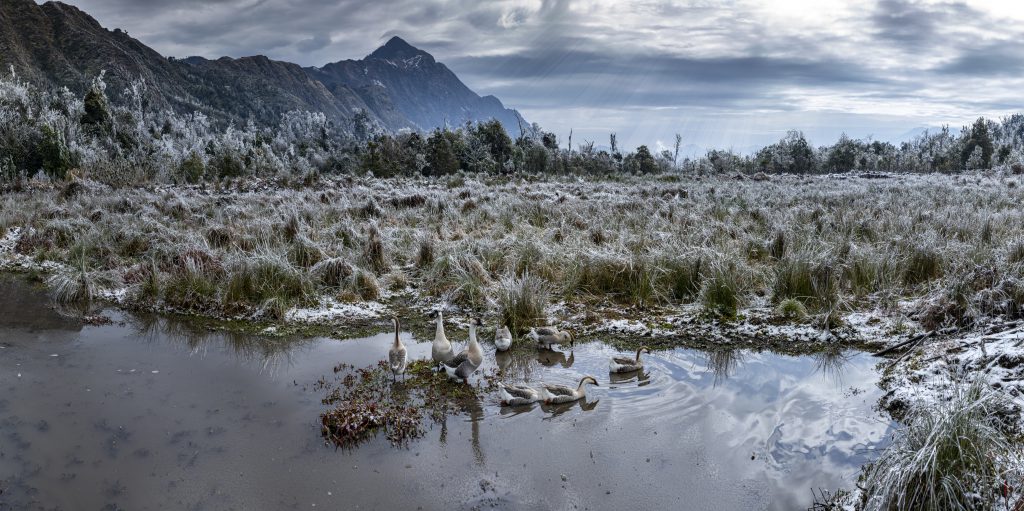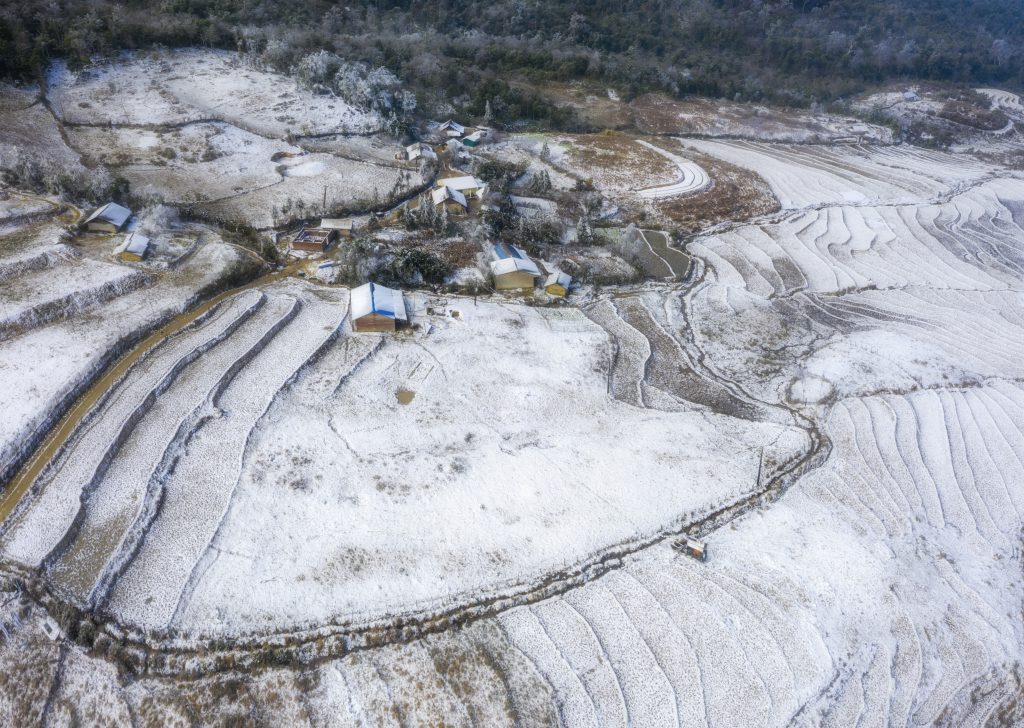Story: Le Viet Khanh
Photos: Le Viet Khanh, Nguyen Hoang Giang
Mount Nhiu Co San, a name derived from the Quan Hoa dialect used by the H’Mong people, translates to “Sung Trau”, or “Buffalo Horn” Mountain. This imposing peak rises at Vietnam’s farthest frontier, guarding our most remote border.

At the foot of Mount Nhiu Co San lies a small village of the same name, established long ago by some Ha Nhi people. Centuries back, spurred by historic upheavals, many prominent Ha Nhi clans, along with people of H’Mong, Dao, and Lo ethnicity, migrated southward to escape turmoil. Many Ha Nhi families chose Y Ty in Lao Cai province, a region on the northwestern border of Vietnam, as their new home. It was during this migration that the village of Nhiu Co San was founded.
Winter brings fierce winds from the North, carrying a biting chill that pierces to the bone, and with it, the possibility of snow. This area, along with Sapa, is one of the rare places in Vietnam where snow occasionally falls. We arrived in the small village on one of the coldest winter days. That year, snow had fallen continuously throughout the night. The outside temperature was so frigid that cameras and other electronic devices ceased to function. We had to wrap our cameras in wool scarves and warm them for a long time before we could turn them on and start working.
The village of Nhiu Co San has preserved its traditional “mushroom” houses. That’s how we refer to these earthen houses with dirt walls and grass-thatched roofs, which look like squat mushrooms. Life here is quite simple, with locals cultivating one crop of swidden rice per year and spending the remaining time planting black cardamom in the forests. This small village has received governmental investment in electricity, roads, and public facilities, so overall, the residents’ economic life is not too challenging.

In the harsh winter, trees and livestock are enveloped in gloomy cold. The falling snow pushes the endurance of domestic animals to the limit. Sitting inside his house, A Xuy, a young man of Ha Nhi ethnicity, asked me: “Would you like some chicken?”
With that, A Xuy ran out to his snow-covered yard, dug around for a while, and pulled out a chicken that had been frozen for who knows how long. Thinking positively, the people here are well accustomed to this harsh climate. They regard the cold, ice, and snow as an inevitable part of life. The need to adapt and overcome in order to survive has become both an instinct and a testament to their resilient spirit.
I slung my camera over my shoulder and followed the slippery trail up the steep mountainside. From here, one could behold the entirety of Nhiu Co San village, blanketed in white snow, resembling a fairy-tale hamlet. Beside the village, trees covered in ice looked like a forest made of transparent glass. When sunlight pierced through the clouds, the whole forest shimmered.

As the day fully broke, more locals and tourists flocked in, delighting in the snow-covered fields. The Ha Nhi children, wearing colorful hats, romped and rolled in the snowdrifts, their cheeks flushed red from the cold. I lifted my camera to capture the scene; through the viewfinder, the landscape and people appeared stunningly beautiful. The visiting photographers were engrossed in their art, capturing both the beautiful scenery and lovely portrayals of the local life and people.
Snowfall is not a yearly occurrence here. Some years, or even a decade, might pass before snow returns to this frontier region. To capture the snow, photographers must endure the biting cold, with temperatures often dipping below freezing. In return, their images of a pristine and ancient village under a white mantle become a cherished and memorable part of each photographer’s life journey.










